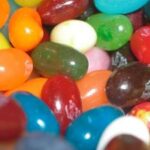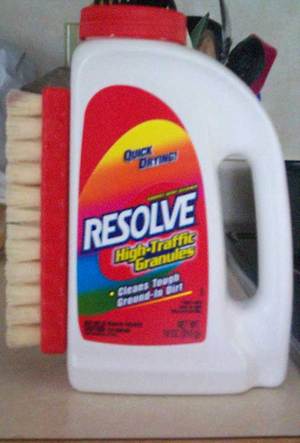Hydra as an Animal
Hydras are interesting creatures. They do not have a brain, but have a nerve net distributed over their whole body. Despite this they have a range of behaviours.
Collecting Hydra
Hydras of various species are very widespread in freshwater habitats. Some of them are so small that they are likely to be overlooked unless you are looking very carefully. Another thing that can make them difficult to see is the fact that they contract to what looks like a small blob of jelly if they are disturbed. Hydra viridis can be small enough to live on the underside of the “leaves” of Lemna Minor, the Lesser Duckweed. Since this species is usually bright green from the algae in its cells it is extremely difficult to see in this situation.
Many people have hydra in their aquariums, with the aquarium owner being completely unaware of the Hydra, and the hydra causing no problems.
To collect Hydra, the simplest way is to go to a lake or similar body of freshwater and gently pass a fine net through plants growing in the water of the lake. With reasonable luck you will have caught more than one type of Hydra in your net.
Animal
A Hydra is a carnivorous animal. It feeds on small living things. However some hydras especially, Hydra viridis, have zoochlorellae algae cells in their bodies. These algae photosynthesize; producing sugars and other things which are used both by the algae and by the Hydra. The species of Hydra with algae can live for a considerable time without catching any prey. Presumably the Hydra also supplies the Algae with its mineral requirements. Some of these things like nitrates would actually be waste products of the Hydra’s metabolism.
This arrangement is similar to the marine corals, which are related to hydra.
Food
Hydras catch small animals. In many cases they are eating microscopic creatures like ciliates, but a large Hydra can eat adult Daphnia.
The tentacles at the top of a Hydra touch something in the water and stinging cells called nematocysts are triggered, shooting out tiny darts at the thing that touched the hydra. These darts are attached to the hydra polyp by very fine threads. The darts are barbed and attach themselves to the potential prey, injecting poison. This is the same mechanism used by jellyfish in the sea. Many jellyfish have stings that are painful to Humans and some can be fatal. As far as I know, Humans cannot feel the stings of Hydras.
The food item is then reeled in and transferred to the hydra’s “mouth” at the top, surrounded by the tentacles. The food is then digested as much as the Hydra is capable of and the nutrients adsorbed. The undigested parts of the Hydra’s meal are expelled through the “mouth”.
Respiration
Hydras do not have specialized organs for absorbing the dissolved Oxygen from the water. This is done through the skin. Apparently the movement of Oxygen into the Hydra and of carbon dioxide out of it is by diffusion although active transport of the gasses cannot easily be ruled out.
The Hydras which have algae in them would also get Oxygen as a waste product of the photosynthesis carried out by the algae. In turn the algae would use carbon dioxide which is a waste product of Hydra metabolism.
Movement
Hydras are sessile. That is, they are attached to surfaces rather than being free floating like jellyfish. But they do have ways of moving around. They can move slowly by the base flowing as if it were an amoeba. They can also move like an inchworm by looping their top and attaching it, alternating between their top and their base. The third way they can move is to release themselves from their surface and float around hoping to find a better place to live.
Light
Hydras do not have eyes or similar specialised light sensitive organs. However, their bodies allow light to pass through them. Nerves appear to have some sensitivity to light, so it is not surprising that Hydras can sense light and dark.
Most species of Hydra avoid the light, but the ones with algae in them are attracted to the light. This is a logical thing to expect because Hydras with algae need the light for photosynthesis, while the sorts without algae are more visible both to their prey and to their predators in well lighted areas. This suggests that there is a quite big advantage for the Hydra to be able to form a symbiotic association with algae.
Hydra Immortality
Of course living things can die. More than that, the animals and plants we are most familiar with will grow old and die of old age related things, this is known as senescence. This does not apply to all living things. A bacterium can divide into 2 near identical “daughter” cells. That is, both the new cells have equal right to be considered as the original. This has apparently been going on for however many years that bacteria have been in existence.
Apart from things like bacteria there are some animals which may not grow old in the same sense that most do. It can be difficult to prove this although it is often possible to disprove it.
Some studies suggest that hydra do not die from old age and in theory could live for ever. The life of an individual Hydra is a dangerous one and the average life is quite short. Although it might be difficult to prove, a very old Hydra could exist.
Brain
A brain is a concentration of nerves. In theory there is nothing to prevent an animal having more than one brain. In fact it appears that some types of dinosaur did have two brains.
Hydras do not have brains in this sense. Instead they have a nerve net distributed fairly evenly throughout their bodies. This works for their life style.
Reproduction
The most common way for Hydras to reproduce is asexually, with a new, genetically identical, individual budding off from the parent Hydra. Hydras can multiply very quickly under favourable conditions.
They can also reproduce sexually. Some types form resistant eggs so that the drying out of a pond will not necessarily get rid of all the Hydras.
Regeneration
If a Hydra were cut up, then as long as each piece had all three types of Hydras vegetative cell, it can grow into a complete animal.
Sources
Hydras as a problem in aquariums.
Blue Gouramis.
Duckweed.



